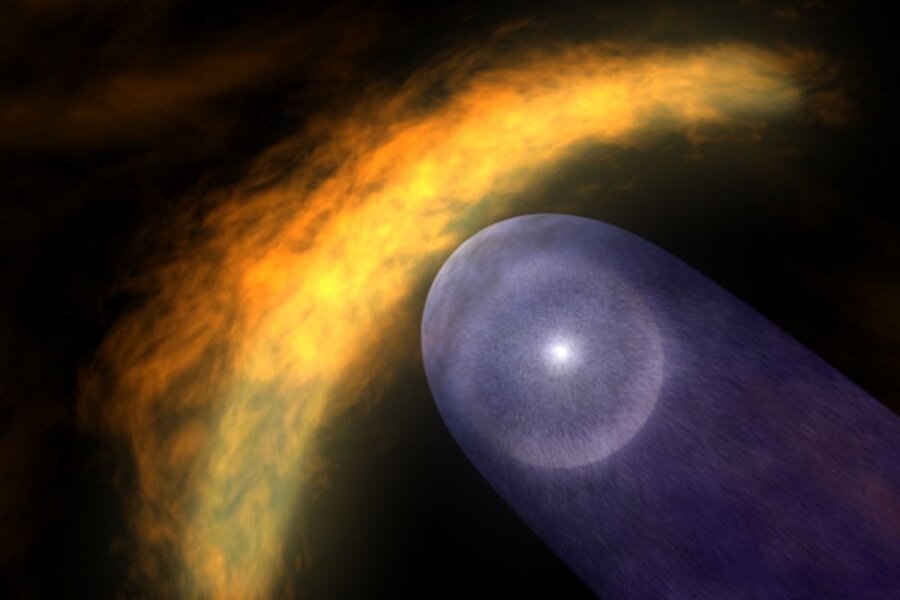NASA’s IBEX finds mysterious ribbon at edge of solar system
Loading...
Astronomers have discovered what could turn out to be the solar system's version of Earth's aurora.
The phenomenon appears as a vast, mysterious ribbon at the edge of the solar system – the boundary between a giant bubble of charged particles that the sun blasts in all directions and the clouds of gas and magnetic fields that are found in interstellar space.
The ribbon shows up in a new, all-sky map of this boundary region produced by NASA's Interstellar Boundary Explorer (IBEX) satellite, which was launched last October. On Thursday, the National Aeronautics and Space Administration announced the discovery. The results appear in a collection of six papers in Friday’s edition of the journal Science.
The discovery of this ribbon feature "is a shocking new result for us," says David McComas, the lead scientist on the IBEX project.
Researchers are at a loss – at least for now – for an explanation. But some suggest that it could be the solar system's version of the northern and southern lights. Instead of appearing as a curtain of light, as Earth's auroras do, the solar system's version appears as a curtain of neutral particles.
Some of these neutral particles arrive from interstellar space. Others begin as charged particles that accelerate back toward the sun from the boundary between interstellar space and the sun's bubble, or heliosphere. Along the way, they pick up any electrons they need to become neutral atoms.
Current theories had suggested that IBEX might see small variations in the number of these neutral atoms in any one patch of space. But the ribbon represents an unexpected structure, and it registers upwards of three times the number of neutral atoms that theories had predicted.
One explanation for the ribbon: It’s appearing where the galaxy's magnetic-field lines are coming into contact with the heliosphere. Dr. McComas likens it to a ball moving inside a loose bundle of bungee cords.
Scientists are keenly interested in this boundary and how it works, in no small part because it represents the solar system's first line of defense against powerful galactic cosmic rays. These "rays" actually are nuclei of heavy elements forged in the furnaces inside stars. When the stars that form these nuclei explode as supernovae, the nuclei are accelerated to high energies and hurtle through space. The magnetic fields at the solar system's boundary deflect many of these heavy ions.
The protective boundary can shift with time, however.
When the sun travels through a relatively thin cloud, as it is thought to be doing now, the "push" from the solar wind is stout enough to offset the pushback from the interstellar cloud the sun is encountering. This forward boundary currently is about 10 billion miles from the sun.
But when the sun moves through a dense cloud of interstellar material, the pushback can drive the boundary of the heliosphere back toward the sun, explains Rosine Lallement, a researcher at the French National Center for Scientific Research in Paris who studies the heliosphere.
Astronomers have seen this push-and-pushback phenomenon around other stars. There is evidence that during the solar system's 4.6-billion-year history, this kind of encounter has occasionally driven the heliosphere deep inside the orbit of Earth, leaving the third rock from the sun exposed to the brunt of incoming galactic cosmic rays.
A better understanding of the physics governing the boundary between the heliosphere and interstellar space also is important in determining whether the planets around other stars are suitable habitats for life – at least on the surface, adds Nathan Schwadron, a space physicist at Boston University. Dr. Schwadron is the lead author of one of the six papers reporting the results.
-----
Follow us on Twitter.





